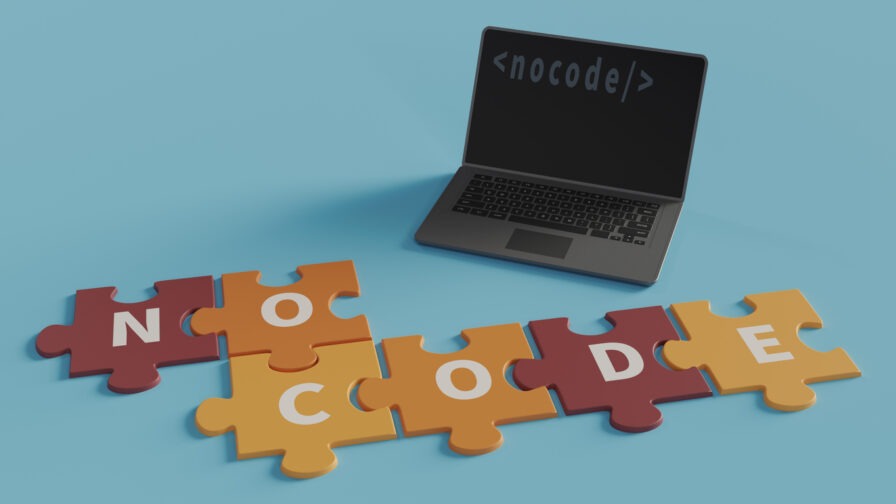
Today, low-code techniques are considered to be the main driver behind the quick development of business applications. For companies, accelerating the development process means obtaining significant savings in terms of both time and money.
The low-code approach was created precisely for this reason, allowing developers to work through previously written code components, guaranteeing maximum results with a reduction in implementation times. This is a trend that, according to codeless.co, won’t stop growing in the near future and will account for 65% of all app development activities by 2024.
In this context, a leading Italian company started a collaboration in 2018 with Digitouch for creating a platform that extends the current Supplier Portal and fully adheres to its business technologically and functionally, following a low-code approach.
The company’s purchase process management system merges the various tasks and related statuses of the acquisition process in an integrated manner: from budget allocation and approval to the creation and management of tenders, up to the closing and registration of the contract of the same.
In the general digital innovation plan, the objective was to guarantee that its managers, the main users of the Passive Cycle system, were able to access and conclude the authorization phase by carrying out all the steps with a simplified, multi-channel, and mobile User Experience.

Introduction to Low-code development
Let’s take a closer look at the key points in low-code development to better understand the work done by Digitouch: the term Low-code development defines those development platforms that allow programming through the use of pre-configured modules, rather than writing the code from scratch.
The drag-and-drop approach and visual tools, a trademark of low-code platforms, allows developers to build the application simply and automatically, both reducing the amount of manual code writing and consequently accelerating the creation of the application. Thanks to this feature, low-code platforms are made accessible even to non-programming experts, such as business managers who, with these tools in hand, can contribute to all phases of project development.
There are several advantages that come with low-code technology:
- Interactivity: not only developers, but anyone can participate in the development of the application. This means greater interaction by the Business Manager, who will be able to make a greater contribution to the project
- Responsiveness: through low-code platforms, developers can quickly update and modify applications. This allows the company to keep up with the modern, rapidly changing market

The digital transformation process in the context of purchase management
In the era of digital transformation, implementing new technologies that make processes more efficient while boosting the business has become key for companies, making Business Process Management (BPM) and particularly Purchase Process Management solutions even more essential to the success of the projects.
The management of business processes was created precisely to help companies better organize the tasks and operations to be carried out to radically change the business structure, starting from the offer of products and services and finding new ways to increase their value. For this reason, in the digital transformation strategy, these solutions are the basis of change, since they can observe all the transition processes from the inside, finding all the errors and defects, even those that could escape the human eye.
One of the main advantages of this approach, in addition to optimizing productivity by reducing costs, is the process by which managers can keep track of the activities carried out, in such a way as to observe strategies in real-time, in such a way that any changes to be made to make them fully functional.
With this in mind, digital transformation leaders Digitouch developed a platform to transform their partner’s Passive Cycle system into a modern, highly usable, multi-channel, and responsive application.
Through the Meware methodology approach, an Agile methodology based on the Unified Process (UP) development process, they were able to analyze and design the solution, first of all defining the requirements that it had to possess. This was key to quickly providing an estimate in terms of costs and implementation times.
The development activities of the new system were mainly linked to the User Experience since modern and intuitive graphics guarantee customers, suppliers, and operators a faster use of the services. This new UX approach also consists of the introduction of Micro Front-End and Microservices for the migration of services to the Cloud, according to the new architectural standards of the client company.
The modernization process included DevOps methodology and Cloud Native technology, as well as the Micro Front-End based architecture, making it possible for Digitouch to easily re-engineer the assignment and contracting processes.
This is still contributing, on an ongoing basis, significant improvements to the purchasing processes in terms of:
- Optimization of lead times (from a sequential process to several parallel mini-processes governed by the buyer)
- Constant monitoring of the progress of the assignment and contracting processes
- Optimization of the User Experience for both the buyer and the actors involved in the approval process
- Creation of a Progressive Web App which guarantees the directors multi-channel management of the purchase processes.
APPIAN for Low-Code development
As explained above, the low-code development philosophy focuses primarily on the speed of the innovation processes. This guarantees companies to quickly create graphically enhanced applications and user interfaces, integrating technologies, data, and people in a single flow, in order to quickly reach the set goals.
The Appian platform works just like this, through a unified suite of native automation technologies, such as Robotic Process Automation (RPA), artificial intelligence (AI), and intelligent document processing, both ensuring continuous improvement of workflows and simplifying the management of complex decisions that could lead to an extension of development processes.
One of the main purposes of the Appian platform is to make the life of developers easier, thanks to its ability to process large volumes and a large variety of documents, quickly automating document-driven workflows and acting on data, the peculiarity is that all this can be done through a single interface. Furthermore, through Appian, organizations can manage and monitor all automation processes, guaranteeing greater scalability and a high level of performance.
In order to provide the client company with a platform that encompasses the specificities of the user tasks of the Passive Cycle processes with a simple, immediate, and usable User Experience (for the workflow interfaces), the choice of Digitouch was in fact Appian.
precisely for its ability to quickly provide a new business digitization model applied to the Passive Cycle and to the management of internal processes connected to it.
Case Study: The advantages of low-code solutions for major companies
In major projects, the implementation of a low-code solution allowed both to ensure the optimization of development times, and to offer better system scalability in terms of performance. The system design was mainly based on Appian technology.
During this experience, the implementation of the low-code platform made it possible to implement advanced features within the User Experience, improving it through a new graphic layout, which led to the creation of a series of new features, including:
- New accreditation process (registration / authentication)
- New Supplier home page with specific offers dedicated to the Suppliers themselves
- Management of supplier attributes for invoices / contracts
- Navigation and document management:
- Contracts
- RDA
- Invoices
- Messaging management from / to administration
- Administration users area
Concerning security, however, the data of the Suppliers are protected by the Registration and Authentication step, through which the system can identify that:
- The specified billing authorization is not already registered on the portal; if it is already present, the supplier will be informed, through a special speaking message, which is already enabled to access the portal
- If the specified billing authorization is not already registered on the portal, the system will check that it is not already registered:
- If he is not present, he will be redirected to the registration process;
- If it is present, a talking message will be displayed redirecting to the login page to continue the process of registration.
There are also a series of other procedures concerning security, including the possibility for users to access the functionality for viewing and verifying accreditation requests. This section allows users to send the request for further information, deny the request or accept it.
In both cases the system will send a specific e-mail to the supplier.
Another significant advantage of the low-code platform is the optimization of the company’s workflow concerning the Passive Cycle. In this context, technologies have been implemented that make it possible to facilitate the planning of the approval processes.
Other features such as the introduction of the contract signature process on mobile devices through OTP and PIN codes, further simplify the workflow of the operators responsible for signing.
Conclusions: is low-code the future?
With the birth of low-code platforms, the future of programming is now sealed. The goal will always be to simplify the work of programmers as much as possible in order to intensify the speed with which applications are developed.
Digitouch confirmed itself to be an example of this, providing its cutting-edge programming policies managed to quickly create a highly qualified platform for the client, guaranteeing an unprecedented level of digitization in the company.
The challenge for the future will therefore be to see how these platforms continue to evolve to better meet the demands of a skyrocketing digital market.





